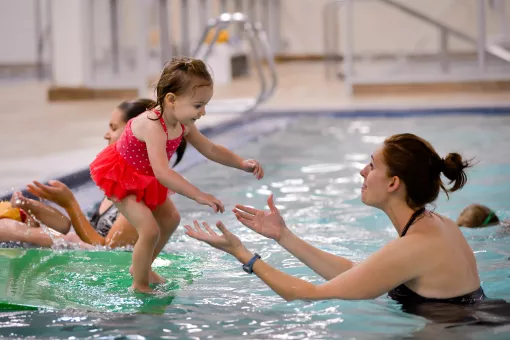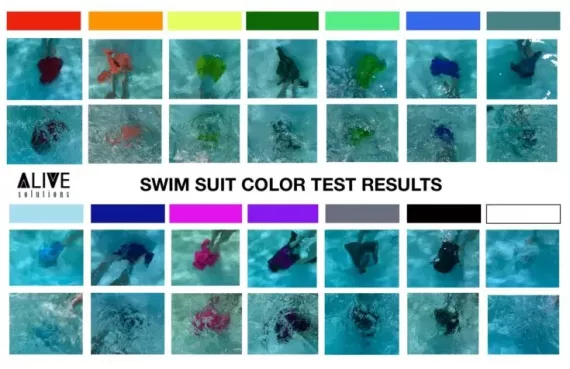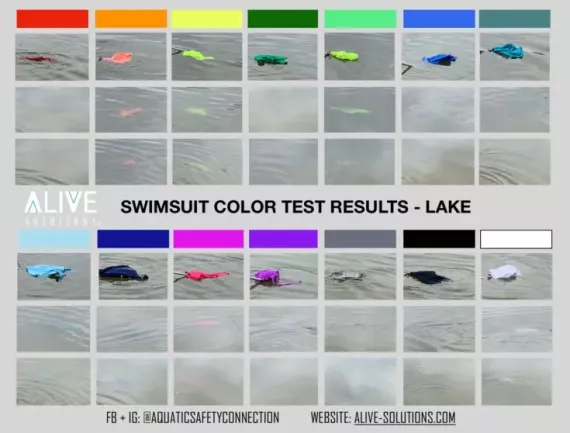Did you know that drowning is the leading cause of injury-related death among children between 1-4 years old in the United States? Every year, an estimated 3,960 drownings occur. Our goal at the Y is to provide as many people as possible with access to swim lessons and give you the tools and knowledge to keep yourself and your family safe. In 2024, we served more than 26,000 people in swim lessons; your support can help us reach even more children and bring peace of mind to more families who spend time around water.
A study completed by “Safe Kids Worldwide” uncovered some misconceptions that parents have around water safety. For example, nearly half of parents they spoke with thought that if their child was drowning nearby, that they would be able to hear it – however, drowning is silent and there may be very little splashing, waving, or screaming.
Another study by “Safe Kids Worldwide” discovered that more than half of the parents surveyed think that the lifeguard on duty is the primary person responsible for their child’s supervision at the pool. In reality, watching your child in the water is your responsibility. A lifeguard’s job is to enforce rules, scan, rescue, and resuscitate when needed.
YMCA Swim Band Policy
At the Y, we require that all participants under the age of 15 take a swimming test. This swim test helps our lifeguards and staff to identify a child’s skill level and appropriate areas for swimming. Before you visit, we encourage you to learn more about our complete swim test and swim band policy.
We understand that it can seem like a pain to pick up a swim band each time you visit the Y to swim but it’s vital for our organization to take to ensure everyone’s safety and another step in achieving our multilevel safety approach. We invite you to learn more about our full policy on our Aquatics page.
Swim Readiness
When preparing to take your family swimming it’s important to make sure each family member is prepared. Here are a few items to keep in mind as you plan your time in the water.
Staying Hydrated
Being in the water does not equal being hydrated. Throughout the day, especially on warm days or when you are outside swimming, sipping water will keep your body temperature regulated and best serve your physical well-being.
Take breaks often to prevent overheating, muscle spasms, improper muscle functioning and, in extreme cases, death. Sip on some water at each interval and listen to your body. If you are feeling dizzy, nausea, or unwell remove yourself from the heat and seek medical help.
Bright Swimsuits are Fun and Safe
When you’re shopping for a swimsuit, it’s tempting to opt for trendy swimsuits. However, the color of your child’s swimsuit could save their life if there’s ever an emergency. In outdoor pools with glare and poor visibility, most if not all swimsuits completely disappear under water. In an indoor pool the clarity of the water tends to be better.
In a study completed by “Alive Solutions,” it found that light blue and white swimsuits can still disappear. Next time you are shopping for swimsuits remember to select bright colors. The most visible colors underwater are neon pink and neon orange.
Life Jackets Resources
Mary Bridge Children's Hospital & Health Network loans life jackets, free of charge, for short-term use (up to two weeks) year-around. They fit both children and adults for life jackets and offer a brief lesson on proper use. You can pick up life jackets for your family on Mondays, Wednesdays, and Fridays — by appointment only—from its office in Tacoma. To make an appointment to have your child fitted for a life jacket, contact childsafety@multicare.org.
When you go out boating and don’t have a life jacket or find yours doesn’t fit properly, you can visit a life jacket loaner station and borrow an infant, child, youth or adult life jacket for the day or weekend—at no charge through Washington State Parks. When finished, simply return the life jackets to the same station.
Life jacket loaner stations are located at marinas, near boat ramps, or paddle craft launch sites and at various state parks. The State Parks Boating Program facilitates the statewide life jacket loaner program in partnership with the Washington Drowning Prevention Network.
We also recommend you reach the U.S. Coast Guard recommendations about How to Choose the Right Type of Life Jacket (PDF) if you’re purchasing life jackets for your family.
Have Fun!
The key to having fun in and around the water is staying safe. Before you go swimming with your family at the Y or out to a lake or river to keep the above in mind. By staying hydrated, using a U.S. Coast Guard certified life jacket if needed, following the rules at the pool, and wearing brightly colored swimsuits, you’re off to a great start. You can also help your family prepare for time in and around the water by signing up for swim lessons at your local Y.
If you ever need to help someone, “Reach, Throw, Don’t Go!” is an essential water safety skill taught throughout our YMCAs.


